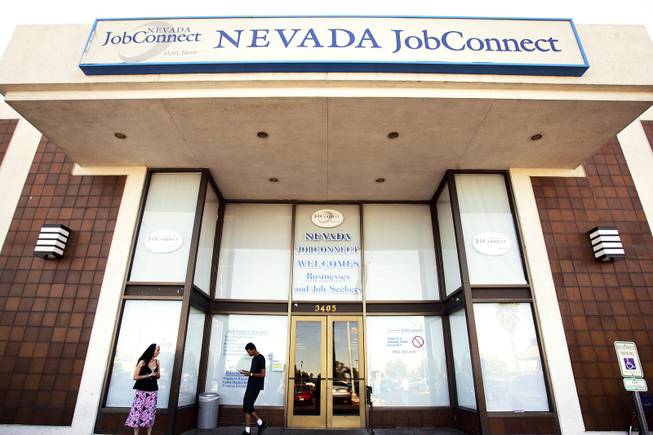Published Friday, Oct. 3, 2014 | 7:45 a.m.
Updated Friday, Oct. 3, 2014 | 8:33 a.m.
WASHINGTON — In a burst of hiring, U.S. employers added 248,000 jobs in September and helped drive down the unemployment rate to 5.9 percent, the lowest since July 2008.
The Labor Department's report Friday also showed that employers added a combined 69,000 more jobs in July and August than the government had previously estimated.
The unemployment rate fell from 6.1 percent in August and is now close to 5.5 percent, which many economists consider a healthy level for the United States. The lower rate, combined with the surge in hiring, will intensify debate within the Federal Reserve on whether to raise its benchmark interest rate earlier than expected. Most economists have predicted that the Fed would start raising rates in mid-2015.
The Fed might now feel heightened pressure to raise rates to prevent a strengthening economy from igniting inflation. On the other hand, inflation remains so low — even lower than the Fed's 2 percent target rate — that it might decide to maintain ultra-low rates well into next year to try to further strengthen the economy. The Fed's low-rate polices have helped keep borrowing rates low for consumers and businesses.
Average hourly wages didn't budge last month, a surprising trend in light of the healthy job growth. Joseph Brusuelas, chief economist for the consulting firm McGladrey LLP, suggested that more jobs in better-paying industries haven't yet translated into higher pay because employers still have so many applicants to choose from.
"Policymakers will certainly be worried by the lack of wage growth," said Chris Williamson, chief economist at Markit. "Without substantially higher wage growth, the fear is that households will pull back on consumption if interest rates and borrowing costs start rising, snuffling out the wider economic recovery."
September's robust hiring eased fears that a tepid job gain in August might have signaled the start of a slowdown. But the 142,000 gain that was initially reported for August was revised up Friday to 180,000. In addition, July's job gain was upgraded from 212,000 to 243,000.
Stock prices jumped after the release of the jobs report. The Dow Jones industrial average was up 119 points in late-morning trading.
The job gains for September were broad-based and included many higher-paying industries. Professional and business services, which includes engineers, accountants and architects, added 81,000 jobs, the most in seven months. Construction companies added 16,000 jobs, manufacturing 4,000.
Government jobs, which usually pay solid wages, rose 12,000, the most in five months. Retailers added 35,000 jobs and hotels and restaurants 23,000.
The average work week rose for the first time in six months, to 34.6 hours from 34.5 in August. Sam Coffin, an economist at UBS, predicted that employers won't be able to increase that figure much and will likely instead have to step up hiring.
The average hourly wage, though, dipped a penny to $24.53. In the past year, the average has increased just 2 percent. That's scarcely higher than inflation, which rose 1.7 percent in the past year. In a healthy economy, wages usually rise 3.5 percent to 4 percent a year.
Typically, a falling unemployment rate signals a likely increase in wages. The main reason is that employers have to pay more to attract the workers they need. Some Fed members have already warned that the unemployment rate is low enough to spur higher inflation.
But Fed Chair Janet Yellen has said she is tracking many other gauges besides the unemployment rate, most of which still show scars from the Great Recession. For example, there were 7.1 million people working part-time jobs last month even though they want full-time work. That figure is up from just 4.6 million before the recession.
From the Fed's perspective, Coffin said the sluggish wage growth and tame inflation may offset solid job growth and low unemployment rate. That could keep the Fed on schedule to wait until the middle of next year to increase rates.
There are still signs of job market weakness in the other measures Yellen tracks: Among the 9.3 million unemployed, 3 million have been out of work for more than six months. That figure has declined in the past three years but is still more than twice its precession proportion.
And a broader measure of unemployment that includes part-time workers who would prefer full-time jobs, as well as those who have stopped searching, is 11.8 percent. Still, that's down from 12 percent in August and 13.6 percent a year ago.
The improved job growth comes after President Barack Obama touted his administration's economic achievements in a speech Thursday. The economy is the top issue in voters' minds as the November elections near.
The number of unemployed fell in September by 329,000. Most of them found jobs. But nearly 100,000 stopped looking for work. Their exodus lowered the percentage of Americans working or looking for work to 62.7 percent, the lowest proportion since February 1978.
September's job gain means more Americans are earning paychecks and can spend more. The annual pace of economic growth is expected to remain above 3 percent for the rest of the year. Business investment is picking up, and consumer spending is growing at a steady if modest pace.
AP Economics Writer Paul Wiseman contributed to this report.


Join the Discussion:
Check this out for a full explanation of our conversion to the LiveFyre commenting system and instructions on how to sign up for an account.
Full comments policy